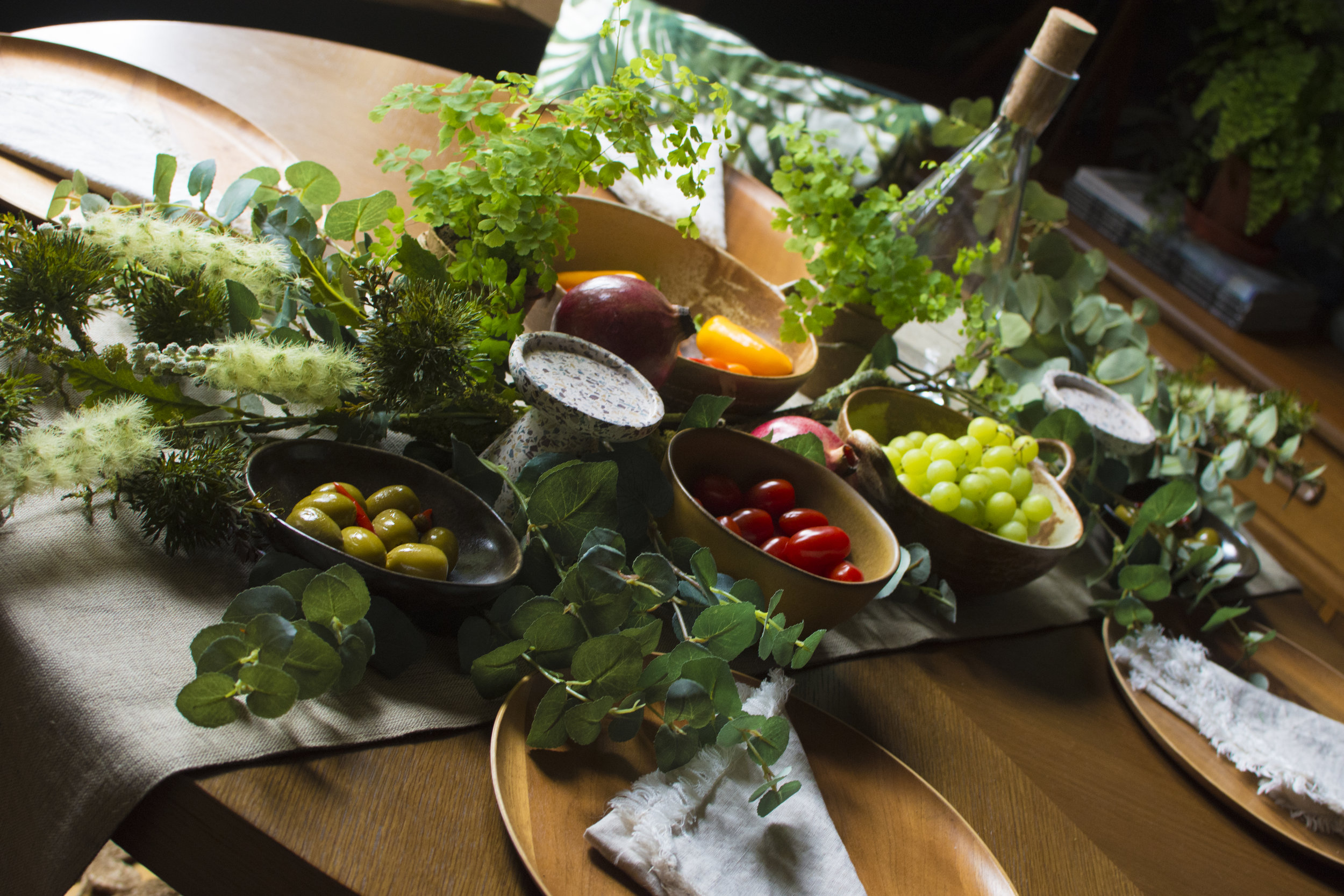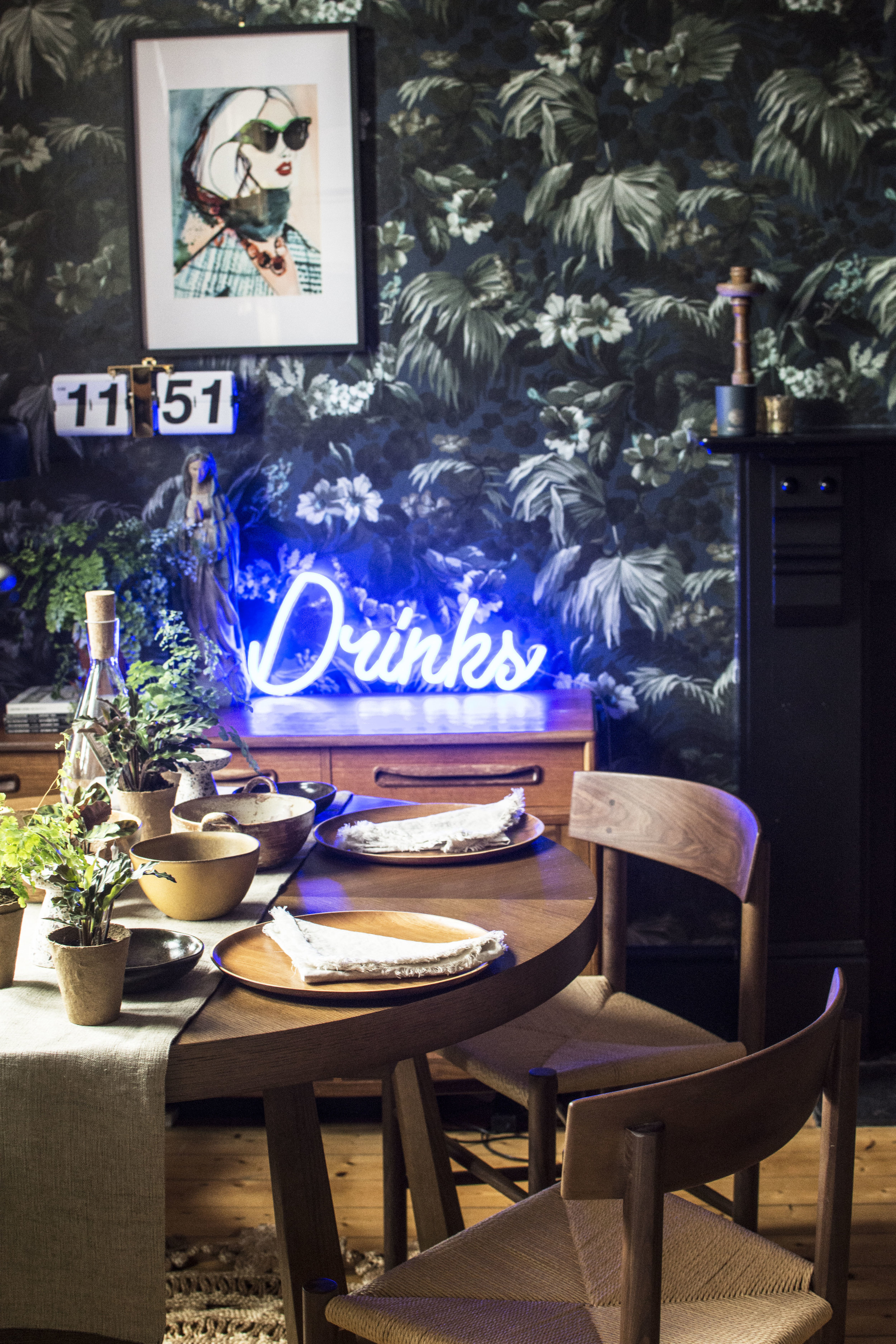Creating a Biophilic Home with Habitat-AD
In a world where uncertainty is rife, where the World Health Organisation expects stress related illness, such as mental health disorders and cardio-vascular disease, to be the two largest contributors to disease by 2020, where burnout is now recognised as a chronic condition, is it any wonder that home owners are retreating into their homes and focusing on their wellbeing within those environments?
So, it is no surprise that interior trends for 2019 reflect this, reflect our cultural need to look after our health in this fast-paced world, and we are seeing a focus on how to improve, not only our homes, but our buildings and office environments to make indoors a great place to be.
Does a long walk in the fresh air or the countryside lift your spirits?
We all know of the benefits nature and even a spot of gardening can have on our wellbeing and on diseases such as anxiety and depression, but how do we capture that and bring the outside in?
Biophilic Design which I wrote about at length here is about connecting with nature within our homes and office buildings. Connecting with nature within these environments is known to reduce stress, heart rate and blood pressure levels and aid relaxation. But did you know it also increases productivity, creativity and self-reported levels of well-being?
With many of us spending 90% of our time indoors, we lose the ability to connect with nature. But, making the simplest changes to your home environment can bring huge benefits and so I have teamed up with Habitat, who have been focusing on utilising the Biophilic Concept in our homes, to style my home, bringing the outside in.
We will focus on how I have done this shortly, but I wanted to focus on some of the concepts first.
There are a number of simple ways to create a direct experience of nature within our homes, and areas to focus on are light, air, fire, water and the use of plants. I’ve already written in depth about each of these here so I will focus on a few which play into this room scheme.
It is scientifically proven that light has a whole range of positive effects on our body. Our circadian rhythms (body clock) are directly affected by light. Sleeping at night and being awake during the day is an example of a light-related circadian rhythm. Most of us pay little attention to light unless we struggle to sleep or suffer from Seasonal Affective Disorder (SAD), but we should.
Do you smile on a sunny day?
That will be the positive effect that light can have on your wellbeing.
The feeling of a gentle breeze in summer. The relief from a bit of air in a stuffy office. Air can aid productivity and provide comfort.
If you take a look at the picture above, you can see how the position of the table brings into play a few of those elements. It is placed right next to the window which has very simple window dressing ensuring as much light comes into the space as possible. In summer, opening these windows will allow a breeze through onto those sitting around the table, bringing comfort whilst eating. A simple view out onto the garden is a great way to bring an indirect experience of nature into your home, which I will touch upon shortly.
Yet, how many of us give this amount of thought to our rooms? To the position of furniture to create a feeling of nature inside our homes?
It really is as simple as creating a little nook around a fire, for example, or placing a table under the window, a little reading area overlooking a garden or even some potted plants (if outside space is short).
Plants quite simply look attractive. But dig a little deeper beneath their beauty and you’ll discover that the benefits of plants go far beyond the aesthetic. Most of us know instinctively that being close to greenery makes us feel more at ease with our surroundings. Remember how you feel after a walk in the countryside?
We experience less stress when there are plants around us. Our homes are more relaxed but, at the same time, more interesting.
A substantial amount of research, has shown that having greenery indoors has dramatic effects on our wellbeing. For example, people in offices are more productive, take fewer sick days, make fewer mistakes, and they are happier when plants are used. Patients in hospitals benefit greatly from being more in touch with nature.
Plants are known to have a whole host of health benefitting properties such as reducing carbon dioxide levels, increasing humidity, reducing levels of certain pollutants such as benzene and nitrogen dioxide, reducing airborne dust levels and keeping air temperatures down.
For all of these reasons adding plants to your home, even a few dotted around, can really make a difference.
Bearing this in mind, this room has been styled with greenery, not only positioned around the room, but directly on the table, where you can enjoy nature while you eat.
Now that we understand the benefits of direct experience of nature, and how simple changes to how you set up your room, can have a great effect on your wellbeing, I want to explore other ways in which you can bring the biophilic concept into your home, using nature indirectly. I’ve already picked up on a view of nature above and this room styling is set up to directly reflect this, with a view out onto the garden.
But, there are many other ways in which you can bring nature in indirectly, through the use of natural materials and natural colours, in other words by evoking or mimicking nature in your home.
There is a move towards textural materials in interiors at the moment, things that you can touch and feel. On the basis of this, there will be more natural, sustainable materials, more rustic surfaces and handmade items coming into our high streets and subsequently our homes, something I discussed in detail here. Think linen, wool, wood, sisal, hemp, rattan, and so on. Not only is this a great way to bring nature indoors, it helps create a more environmentally friendly and sustainable way of furnishing your home.
Habitat have recognised, not only the need to think about connecting with nature in our homes, but have also brought out a number of natural materials which you can use to furnish and style your home. You can read more about this on their Biophilic Design blog and shop Habitat’s natural trend.
Wood plays such a great role in bringing the outside in. There is nothing more natural than wooden furniture and so the first item I chose to style my room with is wooden dining chairs, in particular the Oregan Chair in Walnut with a natural cord seat. It is the perfect example of utilising natural materials plus it sits beautifully in this room.
In the photo above right, you can also see the TOKKI Marbled Cement Table which brings a lovely contrast to the dark wood. Naturally, there is a large Boston fern styled on top.
To add further to the table, I chose two ZULA Terrazzo candle holders, a material that has had a resurgence in the interior world recently where you can find it in kitchen surfaces, to tiles, to lamp bases, to accessories. I added a ROMAN mustard bowl and two ROMAN black bowls, since adding mismatching ceramics and stoneware dinnerware to a table is a great way to style individually, as well as utilising handmade materials. I also added two ELZORA bowls, one large and one small. Finally, a JUDSON decanter with a cork stopper completes the look.
Rustic and natural materials, handmade ceramics, styled with fresh plants and greenery, alongside fruits and vegetables makes a fresh, inviting and stimulating table to eat at in the summer. Moreover, it evokes the feeling of eating in the garden on a warm summers’ day.
In my window, I wanted wooden lamps, so I added the BODHI hand-woven water hyacinth lanterna great example of a sustainable product and the DALI triple bud vase, alongside some natural grasses.
Biophilic design is so much more than just adding a few plants to your home. It is about creating spaces that both excite and inspire us. Spaces that also allow us to relax and recuperate.
So, don’t worry if you do not have an abundance of nature outside your window, or you struggle to keep a house plant alive, you can fake it by adding nature inspired wallpaper as you can see in my shots above and on the right. You can add pictures of nature, murals, sculptures and natural accessories.
You can take the natural elements I’ve discussed and make them you own. Utilise colours and wallpaper that make your heart sing. Because it is about our spatial awareness too. How a room comes together to make us feel, as much is it is about adding wooden furniture to your room.
Think about colour. It is no secret that green is a colour I use in abundance. Why? Well you can read the psychology behind green here, but in short green strikes the eye in such a way as to require no adjustment whatsoever and is, therefore, restful and soothing.
But, use colour that works for you because colour is so personal and what will make one person feel relaxed and soothed may make another feel sad or disinterested.
Implementing small changes can really make a difference to how you live indoors, and make a real difference to our health too.
This post is a sponsored post but all opinions are my own.
Pin to find this Blog Post Later
The Girl with The Green Sofa





















